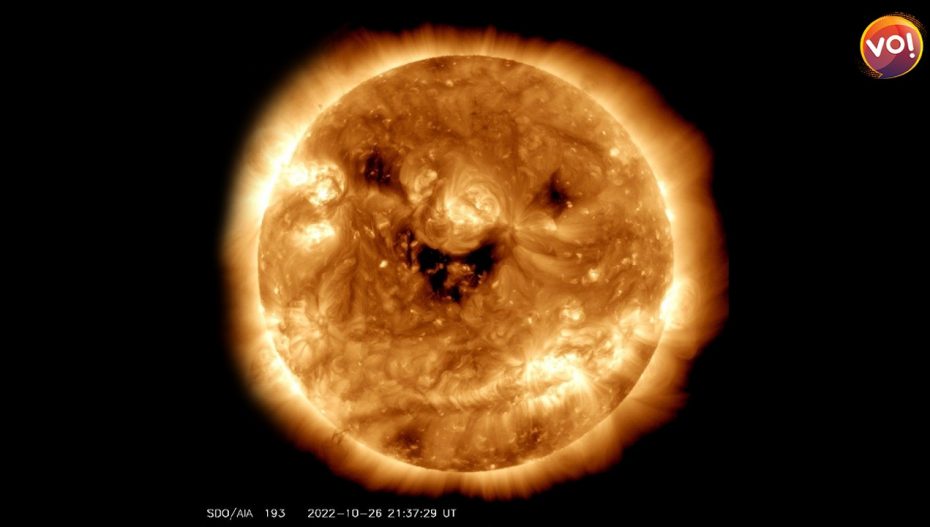We all know the smiley image created by American commercial artist Harvey Ross Ball. Who would have thought that someday our solar system’s brightest star would resemble Ball’s iconic image? Recently, NASA tweeted an image of the sun resembling a smiley icon.
The image, captured by the NASA Solar Dynamics Observatory, shows dark patches on the sun’s surface. The dark spots look like eyes and a smile on a round face. Scientists at NASA have said that the image in the form of a smiling face is formed by coronal holes. These holes are invisible to the naked eye but can be seen in ultraviolet light.
Coronal holes are the regions on the sun’s surface that appear dark in colour. The fast solar wind, with lesser solar material and cooler temperature, comes out into space from these regions. These holes, lasting between a few weeks to months, appear throughout the solar cycle, which is about 11 years. These holes are important for understanding the space environment around the earth.
Though it is not known to mankind what causes coronal holes, the correlation with the areas on the sun where magnetic fields soar up is established.
The fast solar wind streams often interact with the earth’s magnetic field, resulting in creating a geomagnetic storm. It can expose satellites to radiation and interfere with communications signals. The geomagnetic storms relate to the earth’s magnetosphere also.












